 |
 |
 |
| |
NON-ALCOHOLIC FATTY LIVER DISEASE (NAFLD) ASSOCIATES WITH HIGHER RISK OF DEVELOPING SYMPTOMATIC COVID19 INFECTION - INITIAL UK BIOBANK OBSERVATIONS
|
| |
| |
AASLD Nov. 2020
Adriana Roca-Fernandez1, Andrea Dennis1, Rowan Nicholls1, John McGonigle1, Matt Kelly1, Rajarshi Banerjee1 and Arun J Sanyal2, (1)Perspectum Ltd, (2)Virginia Commonwealth
University School of Medicine
Background: Severity of COVID-19 disease is associated with older age, male gender and pre-existing medical conditions. A high proportion of infected patients develop liver injury, and reports indicate that patients with pre-existing fatty liver disease are at higher risk of experiencing severe COVID-19. Early data on COVID-19 testing from the large UK Biobank (UKB) study, allowed us to evaluate pre-existing liver disease as a risk factor for developing symptomatic COVID-19.
Methods: Of 42,146 participants imaged to date in the UKB cohort, 397 had COVID-19 testing data available, with 97 positive and 300 negative results. UK testing was initially restricted to those with symptoms in hospital therefore, a positive test is indicative of hospitalization with severe COVID-19 . MRI derived biomarkers of liver fat (PDFF; %) and fibroinflammation (cT1; ms) were generated using LiverMultiScan® software . Univariate and multivariate analysis were performed on liver biomarkers to determine if these variables increased risk of symptomatic COVID-19 and compared to previously described risk factors . An additional multivariate model using a metabolic risk variable, composed by BMI and liver fat iterations, was also assessed .
Results: Univariate analysis showed previously known risk factors linked to COVID-19 positivity (BMI (p= 0 .0006), being male (p=0 .03), being of non-white ethnicity (p=0 .0002) and having hypertension (p= 0 .004)) increasing the odds of testing positive for COVID-19, surviving multivariate analysis. Multivariate adding BMI with liver fat as an interaction term revealed a relationship between BMI and being hospitalized with severe positive COVID-19 (p= 0 .0002). We also explored the "hepatic- metabolic risk" by stratifying our participants based on obesity and liver fat status . Results demonstrated that, in addition to previously known risk factors, having high liver fat (≥10%) + being obese (≥30kg/m2) was a significant predictor of testing positive (2 .47[CI: 1 .3-4 .7]) .
Conclusion: This research provides further evidence on the link between NAFLD and the risk of hospitalization with severity of COVID-19 . In obese participants, an increased risk of symptomatic disease was not observed in patients without concomitant fatty liver . This highlights the value of identifying this high-risk subpopulation with non-invasive imaging to guide clinical and lifestyle interventions . Figure 1: Representative LiverMultiScan® images from the UK-Biobank cohort, showing multivariate analysis of metabolic risk variable . BMI <30 Kg/m2) and <10% liver fat was used as reference healthy population . Odds ratio and confidence intervals of the associations between obesity and liver fat are presented . Abbreviations: BMI, body mass index; OR, odds ratio; CI, confidence interval. Significance is indicated by *p≤0.05. Reproduced by kind permission of UK Biobank
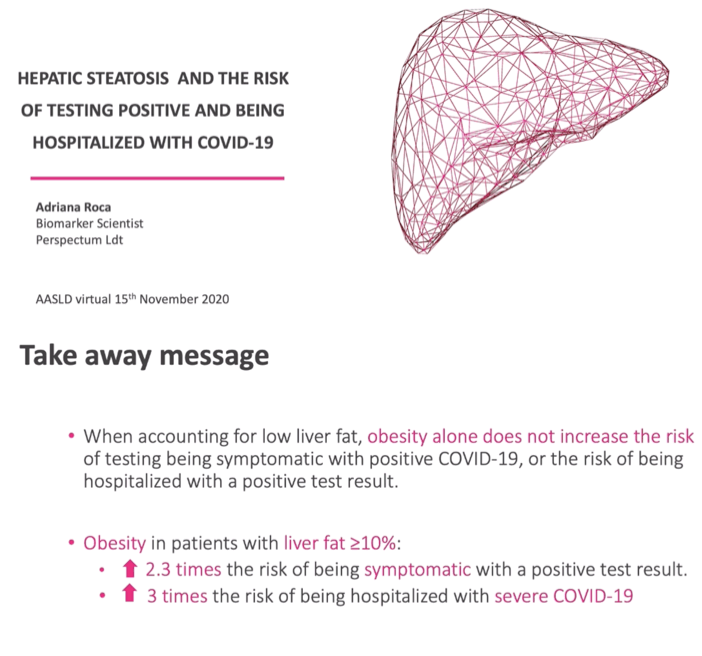
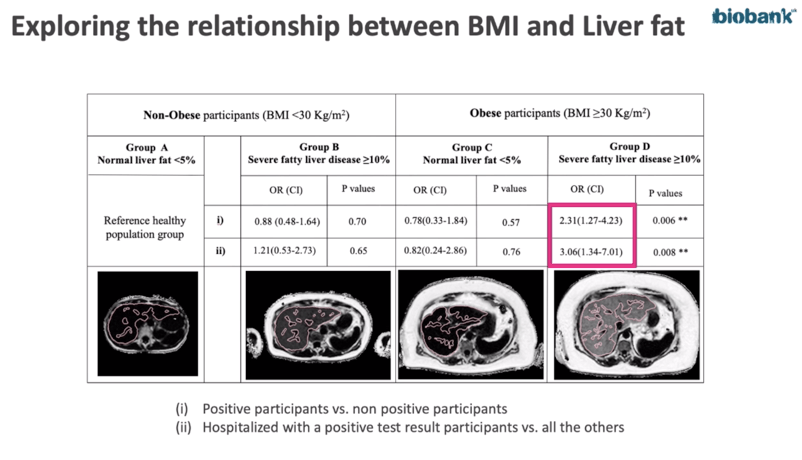

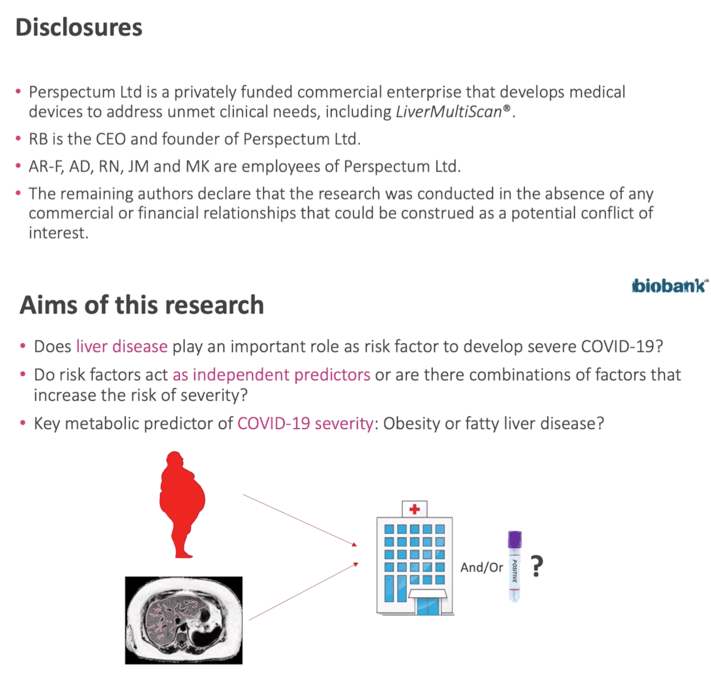
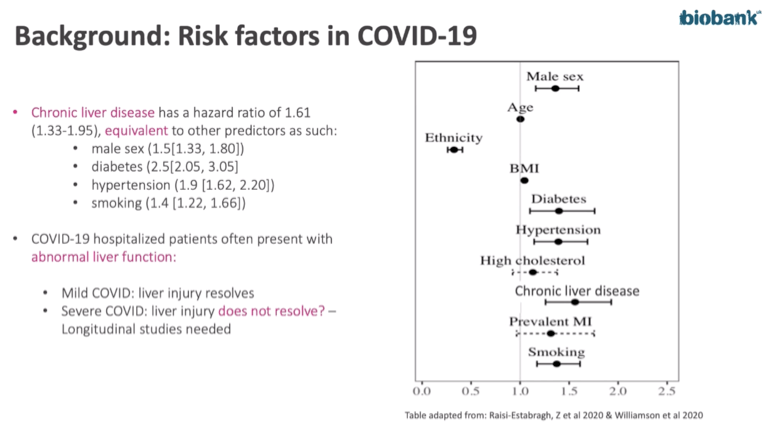

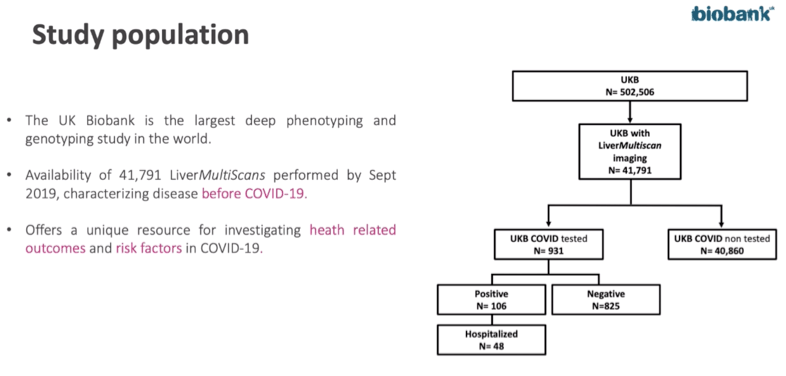
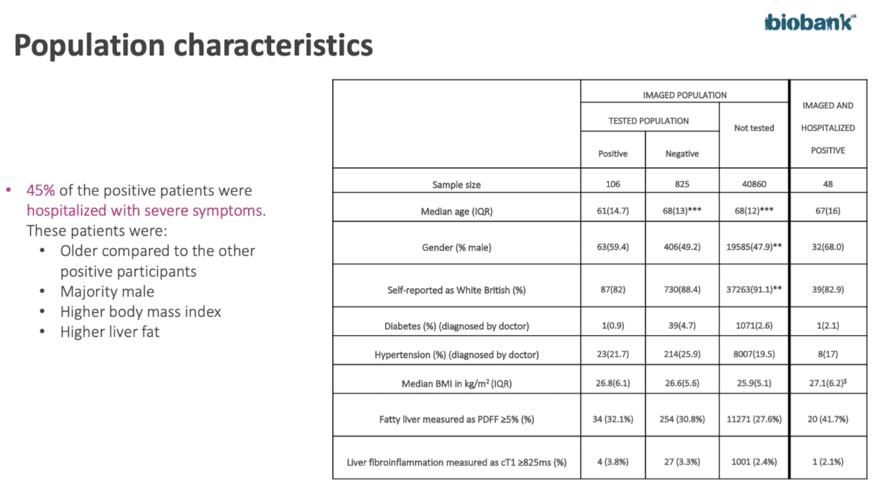
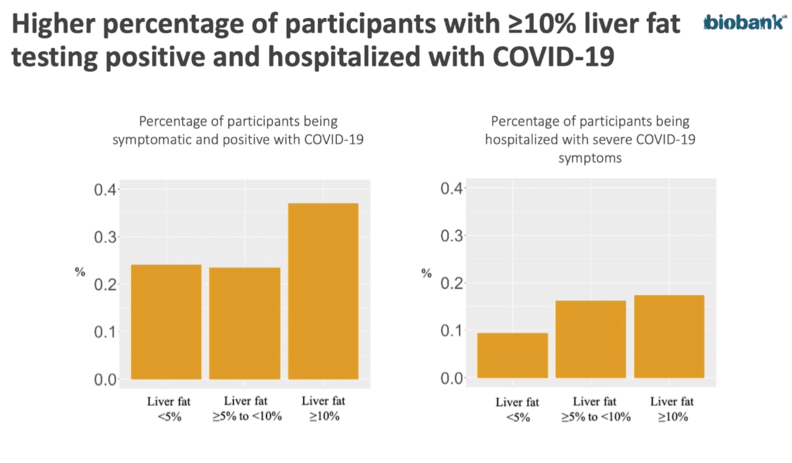
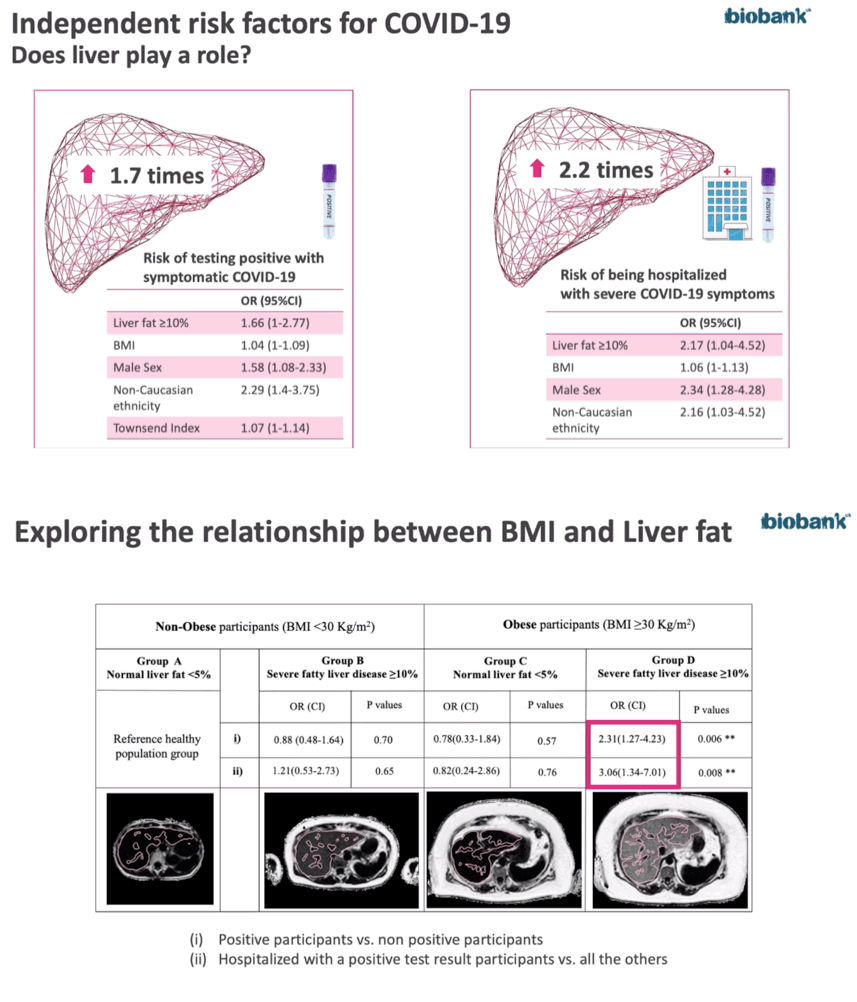
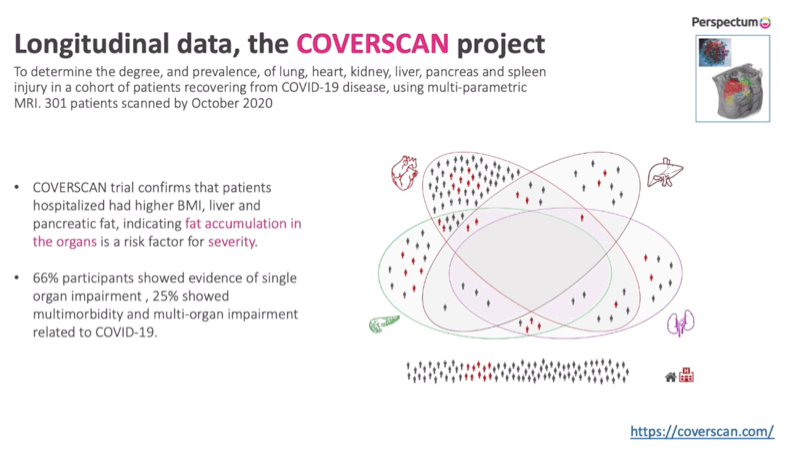
|
| |
|
 |
 |
|
|